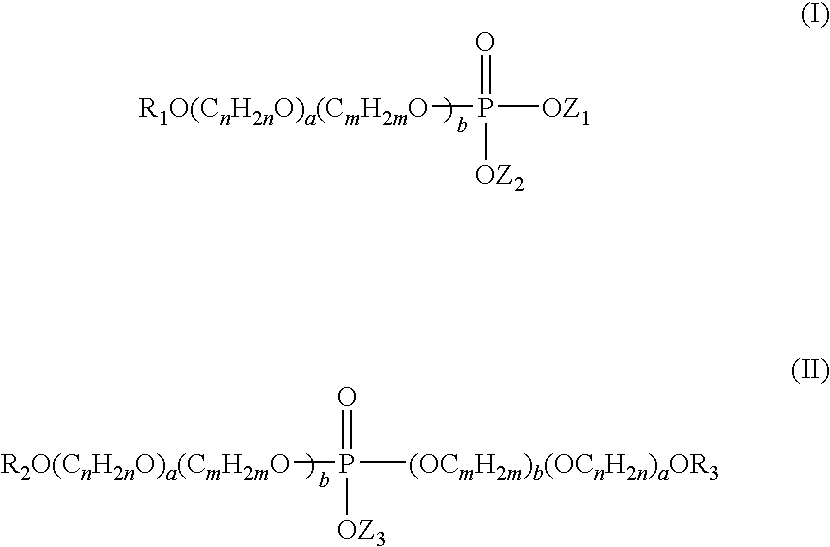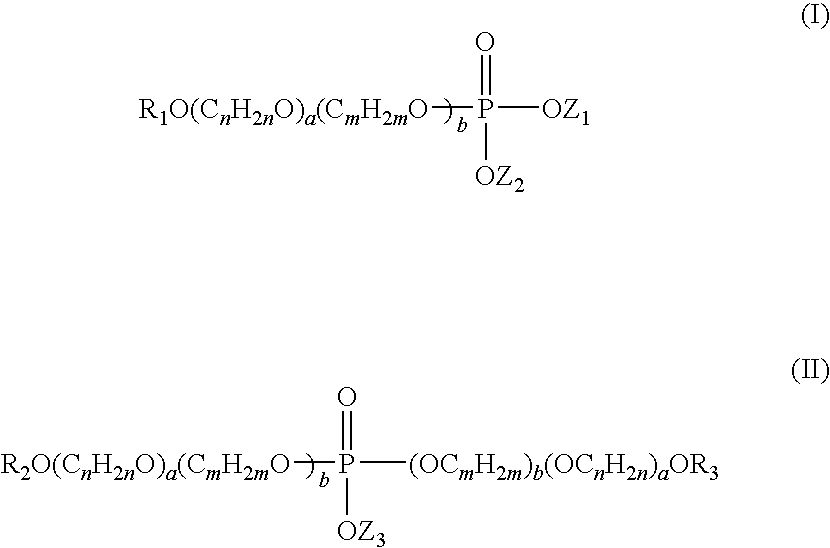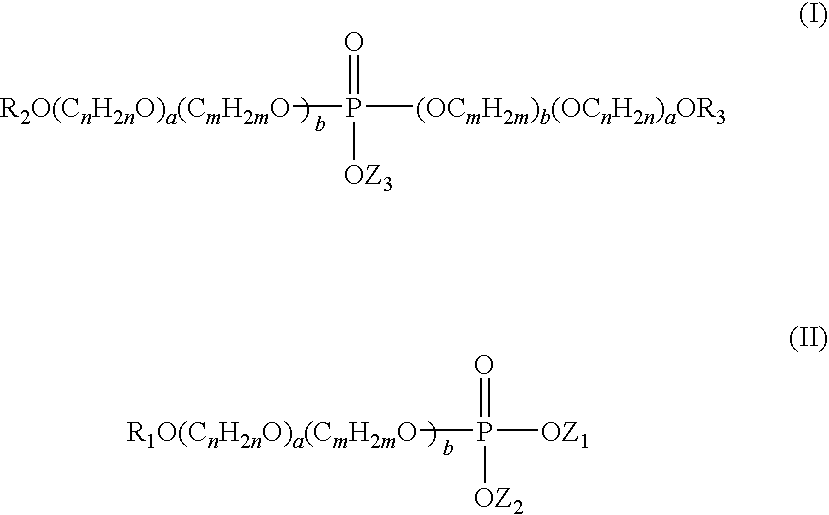Anti-senstivity, anti-caries, anti-staining, anti-plaque, ultra-mild oral hygiene agent
an oral hygiene agent and anti-sensitivity technology, applied in the field of oral care compositions, can solve the problems of ineffective use of supersaturated calcium phosphate solutions or slurries to enhance this natural process, inconvenient and time-consuming methods, and the remineralization process may stop, so as to reduce the sensitivity of teeth
- Summary
- Abstract
- Description
- Claims
- Application Information
AI Technical Summary
Benefits of technology
Problems solved by technology
Method used
Image
Examples
example 1
[0062]For the initial evaluation, a test subject was chosen, who, because of poor dental hygiene habits as a child, had developed periodontal problems. Prior treatment of the condition included elimination of undesirably deep pockets between the gums and molars by surgical removal of gum tissue, exposing dentin normally below the gum line. With advancing age, these areas had become increasingly sensitive to temperature changes and some fluids. The use of the saltpeter toothpaste formulations had become a standard practice; switching to conventional, “non-sensitive” formulations for more than two weeks consistently resulted in pain that required return to the saltpeter formulations, in spite of their label warnings.
[0063]The subject began the test period using a test formulation. The test formulation was prepared using potassium dodecyl phosphate, MAP-L-200 / K, which is commercially available from Rhodia Inc. in the DERMALCARE® phosphate ester line. The test formulation was prepared b...
example 2
Preparation of Potassium Dodecyl Phosphate
[0071]The potassium dodecyl phosphate, MAP-L-200 / K, was prepared by methods described in U.S. Pat. Nos. 5,550,274; 5,554,781; 6,136,221; and 6,262,130, the disclosures of which are incorporated herein by reference. The 42% aqueous solution, DERMALCARE® MAP-L-204 / K, was spray dried by standard techniques at 200° C. in a pilot plant unit. The 31P and 13C NMR spectra indicated that the spray drying process had little effect upon the composition except that the residual phosphoric acid was partially converted to pyrophosphoric acid (potassium salt) and the residual dodecanol was removed.
Interaction with Calcium Phosphates
[0072]Addition of 1 Kg of dibasic calcium phosphate, dihydrate powder to 1800 ml of a 10% solution of potassium dodecyl phosphate (pH ˜7) significantly reduced the foaming of the solution and rendered the calcium phosphate abrasive hydrophobic. Disappearance of foaming was indicative of loss of surfactant from bulk solution. Inc...
examples 3 to 7
Representative Toothpaste and Gel Formulations
[0074]The toothpastes and gels made herein were made using conventional mixing techniques and used in a conventional manner. The following examples further illustrate the invention, but it is understood that the invention is not limited thereto. All amounts and proportions referred to herein and in the appended claims are by weight and temperatures in degrees Celsius unless otherwise indicated.
34567Distilled Water9.80210.3405.00011.895.279Sodium Fluoride0.220—0.243—0.243Sodium—0.760—0.760—MonofluorophosphateTetrasodium———3.5002.000pyrophosphateCellulose Gum0.4000.4000.4000.4000.600(CMC 7MXF)Sorbitol (70% soln.)61.63360.00036.60750.00040.100PEG 6003.0003.000—3.000—Glycerin (99.7% USP)——5.0005.0005.000Sodium Bicarbonate——50.000—43.728TIXOSIL 73118.00018.000—18.000—TIXOSIL 4324.5004.500—4.500—Flavor Oil0.6850.8001.0001.0000.950Sodium Saccharin0.3000.3000.3000.3000.650FD&C Blue No. 10.2000.2000.2000.2000.200(1% soln.)Titanium Dioxide—0.200—0...
PUM
| Property | Measurement | Unit |
|---|---|---|
| molar ratio | aaaaa | aaaaa |
| weight | aaaaa | aaaaa |
| time | aaaaa | aaaaa |
Abstract
Description
Claims
Application Information
 Login to View More
Login to View More - R&D
- Intellectual Property
- Life Sciences
- Materials
- Tech Scout
- Unparalleled Data Quality
- Higher Quality Content
- 60% Fewer Hallucinations
Browse by: Latest US Patents, China's latest patents, Technical Efficacy Thesaurus, Application Domain, Technology Topic, Popular Technical Reports.
© 2025 PatSnap. All rights reserved.Legal|Privacy policy|Modern Slavery Act Transparency Statement|Sitemap|About US| Contact US: help@patsnap.com



